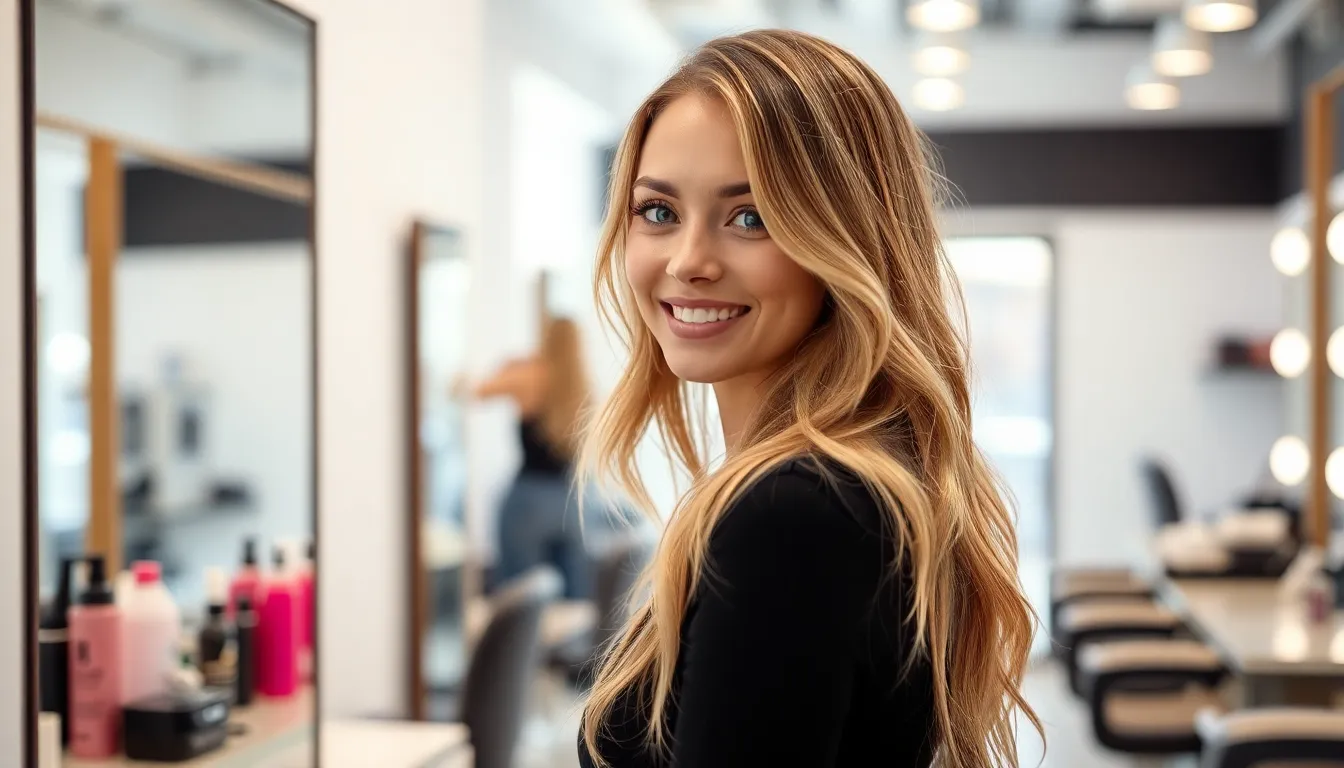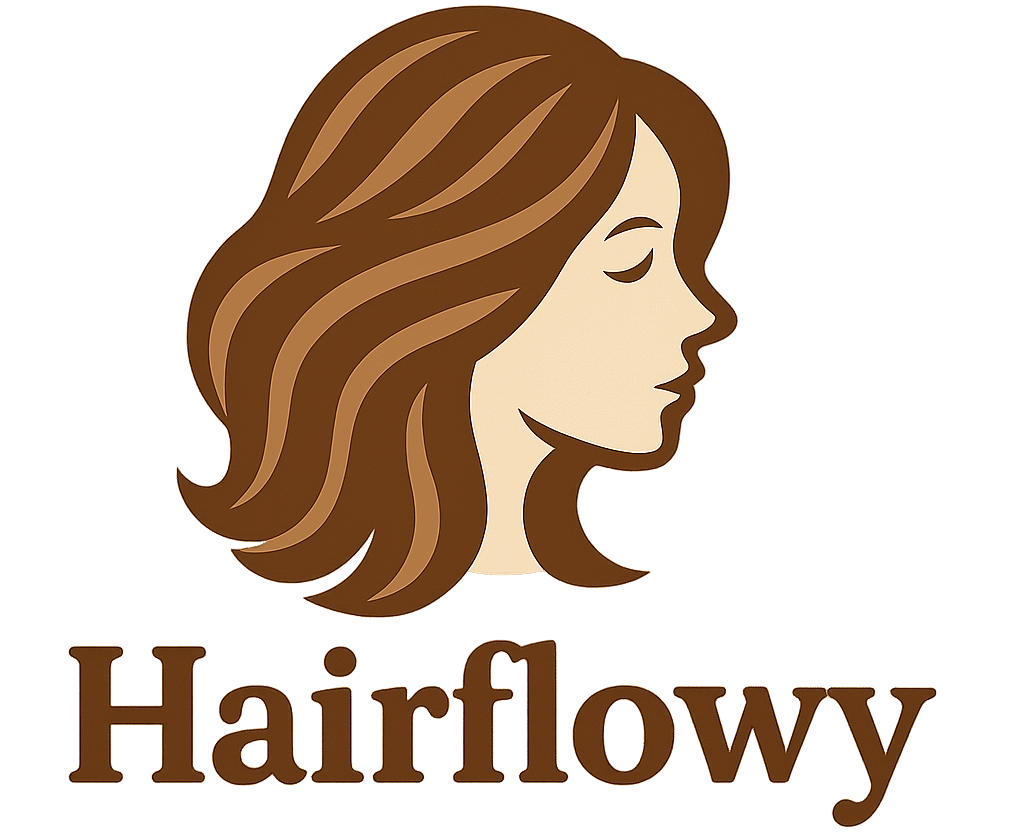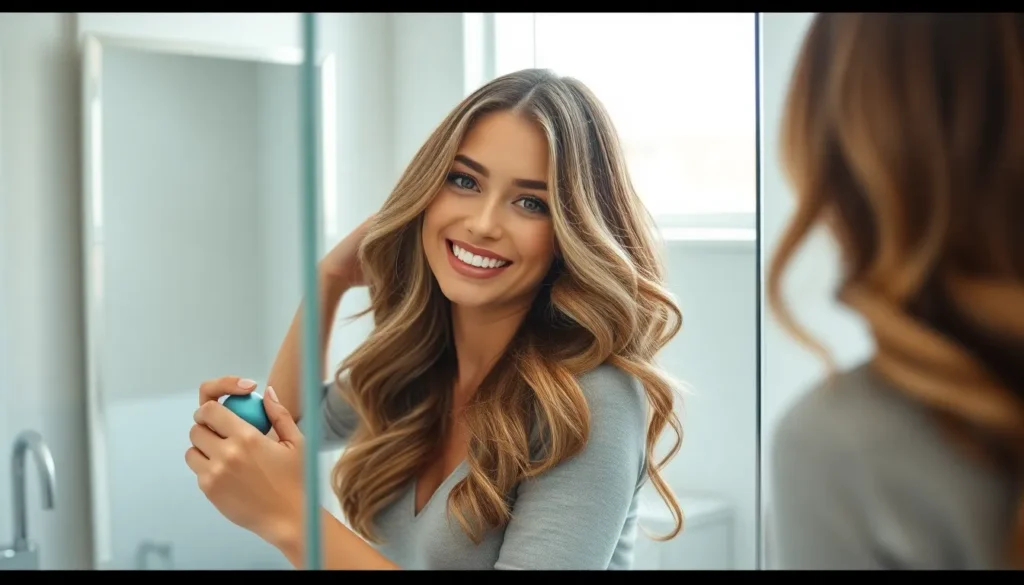We’ve all been there – staring at our reflection and wishing our hair looked fuller and more voluminous. If you’re dealing with thin hair, you’re not alone in this struggle. The good news? The right hair color can be your secret weapon for creating the illusion of thicker, more luxurious locks.
Choosing the perfect shade isn’t just about following trends or matching your skin tone. When you have fine hair, color becomes a powerful tool that can add depth, dimension, and visual weight to your strands. Strategic coloring techniques can transform limp, lifeless hair into a vibrant, full-looking mane that turns heads.
We’re about to share the insider secrets that professional colorists use to maximize thin hair’s potential. From the best base colors to game-changing highlighting techniques, you’ll discover how to work with your hair’s natural texture rather than against it. Get ready to unlock the confidence that comes with hair that looks naturally thick and gorgeously healthy.
Choose Light Hair Colors to Create Volume and Dimension
Light hair colors work like magic for thin hair by reflecting more light and creating the illusion of fullness. Professional colorists rely on this technique to transform fine strands into voluminous looking locks.
Blonde Highlights Add Natural-Looking Thickness
Blonde highlights create the perfect optical illusion for thin hair by adding contrasting tones that mimic natural hair density. We recommend placing highlights strategically around the face and crown area where hair appears thinnest.
Strategic placement involves weaving fine sections throughout the hair rather than chunky pieces that can look artificial. Babylights work exceptionally well for fine hair because they create subtle dimension without overwhelming delicate strands. These ultra fine highlights blend seamlessly with your base color while adding texture and movement.
Foil highlights offer more control over placement and saturation compared to other highlighting methods. Professional colorists can customize the spacing and thickness of each highlight to complement your hair’s natural growth patterns. This precision ensures that your thin hair gains maximum visual impact without appearing overdone.
Ash Brown Tones Prevent Flatness
Ash brown tones eliminate the flat appearance that often plagues thin hair by incorporating cool undertones that add depth. Single dimension colors make fine hair look lifeless and emphasize its lack of volume. Cool ash tones reflect light differently than warm browns, creating natural looking shadows and highlights.
Multi tonal ash brown shades work particularly well because they incorporate several complementary tones within the same color family. Root shadowing with darker ash tones creates the appearance of thicker hair at the scalp line. This technique makes your natural hair color transition seamlessly while adding visual weight to fine strands.
Mushroom brown and greige tones represent popular ash variations that suit most skin tones while maximizing volume potential. These contemporary shades offer sophistication while maintaining the light reflecting properties essential for thin hair enhancement.
Caramel Balayage Creates Movement
Caramel balayage transforms static thin hair into ever-changing, flowing locks through hand painted color placement that mimics natural sun kissed highlights. This freehand technique allows colorists to customize each stroke according to your hair’s unique texture and movement patterns.
Graduated color placement from darker roots to lighter ends creates vertical lines that elongate and volumize thin hair. Caramel tones specifically work well because they’re warm enough to complement most skin tones while remaining light enough to enhance fine hair texture. The gradual color transition prevents harsh lines that can make thin hair appear even thinner.
Face framing caramel pieces brighten your complexion while drawing attention away from areas where hair appears sparse. Professional colorists often concentrate lighter caramel tones around the hairline and throughout the mid lengths to create maximum impact. This strategic placement ensures your thin hair gains both dimension and the appearance of natural thickness.
Avoid Dark Hair Colors That Make Thin Hair Look Flatter

Research consistently shows that dark hair colors can make thin hair appear even more sparse and emphasize areas where the scalp shows through. We’ve identified the exact dark shades that create the most problematic visual effects for fine hair.
Black Hair Emphasizes Scalp Visibility
Black hair creates the strongest possible contrast against your scalp, making any thinning areas immediately noticeable. The stark difference between your dark strands and lighter scalp draws attention to spaces where hair coverage is minimal. We see this effect amplified when hair is pulled back or styled in ways that expose the hairline and crown areas.
Natural lighting makes this contrast even more pronounced, causing thin spots to appear larger than they actually are. Professional colorists consistently advise against solid black color for clients with fine hair because it offers no forgiveness for sparse areas. Your scalp becomes a focal point rather than your hair’s overall appearance.
Deep Brunette Shades Create Harsh Contrasts
Deep brunette colors produce similar visibility issues to black hair by creating dramatic contrasts with your scalp. These rich, dark tones make the distinction between hair and skin too obvious, drawing unwanted attention to areas with less coverage. We notice that deep chocolate browns and espresso shades particularly emphasize the gap between individual strands.
The severity of these dark colors leaves no room for subtle blending with your natural skin tone. Root regrowth becomes more obvious with deep brunette shades, requiring more frequent salon visits to maintain the look. Your hair appears flatter because these colors absorb light rather than reflecting it back to create volume.
Single-Process Dark Colors Lack Dimension
Single process dark colors offer a flat, one dimensional appearance that emphasizes the thinness of your hair rather than creating visual fullness. These uniform color applications provide no variation in tone or depth, making fine hair look lifeless and sparse. We recommend avoiding all over dark applications because they fail to create the illusion of thickness that thin hair desperately needs.
Multi dimensional coloring techniques work better for thin hair because they incorporate highlights and lowlights that add movement and depth. Root shading with darker tones at the base and lighter sections throughout creates visual volume that single process colors can’t achieve. Professional colorists use these varied techniques to mask thin areas and reduce the appearance of scalp visibility between appointments.
Use Highlights and Lowlights to Add Visual Thickness

We’ve seen how color can transform thin hair, but combining highlights and lowlights creates the most dramatic thickness illusion. This dual approach adds both light and shadow to create dimensional volume that makes every strand count.
Subtle Foil Highlights Create Depth
Subtle foil highlights work perfectly for thin hair because they create depth without over-processing delicate strands. We recommend face-framing highlights that draw attention to your best features while adding strategic brightness around the hairline. Balayage techniques blend seamlessly with your natural color, creating a sun-kissed effect that doesn’t require frequent touch-ups.
Babylights offer the most natural-looking thickness enhancement for fine hair textures. These ultra-fine highlights mimic the way children’s hair naturally lightens, creating dozens of tiny color variations throughout your hair. Professional colorists use babylights to add subtle dimension that catches light from every angle, making your hair appear significantly fuller.
Foil highlighting gives us precise control over color saturation and placement. We can target exact areas where you need the most volume enhancement, such as around the crown or temples. This technique prevents over-processing while ensuring each highlight contributes to the overall thickness illusion.
Chunky Highlights Should Be Avoided
Chunky highlights make thin hair appear even thinner by creating obvious contrast patterns. These thick, uniform streaks draw attention to the spaces between colored sections, emphasizing areas where hair might be sparse. We’ve observed that chunky highlights create a striped effect that works against the dimensional look we’re trying to achieve.
Multi-tonal highlights blend better with natural hair color than chunky alternatives. Instead of bold, contrasting streaks, we create several complementary shades that transition smoothly from dark to light. This approach ensures your highlights enhance your hair’s natural movement rather than creating artificial-looking sections.
Blending techniques prevent the harsh lines that make thin hair look patchy. We use feathering and soft transitions to ensure highlights melt into your base color seamlessly. Professional application involves varying the thickness and spacing of highlights to create organic-looking dimension.
Strategic Lowlight Placement Adds Shadow
Strategic lowlight placement creates the shadow and depth necessary for visual volume. We add darker tones beneath lighter sections to create the illusion of layers and thickness. Lowlights break up overly light or uniform color that can make thin hair appear flat and one-dimensional.
Combining highlights and lowlights produces the most convincing thickness enhancement. This dual technique adds both brightness and shadow to create natural-looking depth throughout your hair. We typically place lowlights at the nape and underneath sections while keeping highlights around the face and crown for maximum impact.
Shadow root techniques extend the life of your color while adding volume at the scalp. We create a darker shade at the roots that gradually blends into your colored hair, reducing maintenance needs while creating the appearance of fuller hair growth. This approach helps blend natural regrowth with your colored sections, maintaining a polished look between salon visits.
Consider Root-to-Tip Color Techniques for Maximum Impact

We’ve discovered that comprehensive color techniques spanning from roots to tips create the most dramatic illusion of thickness for fine hair. These approaches work by establishing visual movement throughout the entire hair length.
Ombre Styles Create Gradual Volume
Ombre styles transition gradually from darker roots to lighter ends, building the appearance of natural density. This technique benefits thin hair by creating darker anchoring points at the scalp that gradually lighten toward the tips. We recommend starting with deeper tones near the roots and transitioning to lighter shades that add brightness without overwhelming fine strands.
Strategic color placement makes ombre particularly effective for thin hair concerns. The darker root area minimizes scalp visibility while the lighter ends reflect more light to create volume. Color professionals often suggest keeping the transition zone subtle to avoid harsh demarcation lines that can emphasize sparse areas.
Maintenance requirements for ombre remain minimal compared to traditional highlighting methods. Root regrowth blends naturally with the darker base color, extending time between salon visits. We find this approach especially beneficial for clients with fine hair who want to avoid frequent chemical processing.
Balayage Mimics Natural Hair Growth Patterns
Balayage painting techniques follow the hair’s natural growth direction to create seamless dimension. This hand-painted method allows colorists to strategically place lighter tones where hair naturally catches light. We observe that balayage works exceptionally well for thin hair because it avoids the harsh lines that traditional foil highlights can create.
Color placement through balayage adds depth without overwhelming fine hair texture. The technique focuses on improving natural movement rather than creating uniform color blocks. Professional colorists use balayage to target exact areas like the crown and face-framing sections where volume appearance matters most.
Natural-looking results from balayage make thin hair appear thicker through visual tricks. The painted highlights create shadows and dimension that mimic what naturally thick hair displays. We recommend this technique for clients seeking low-maintenance color that grows out gracefully without obvious demarcation lines.
Color Melting Techniques Blend Seamlessly
Color melting blends multiple shades together to eliminate harsh lines and create natural transitions. This advanced technique works particularly well for thin hair because it prevents the stark contrasts that can emphasize sparse areas. We use color melting to connect highlights with base colors for a more cohesive appearance.
Multi-dimensional effects from color melting add visual weight to fine hair strands. The technique incorporates various tones that create depth and movement throughout the hair length. Professional application ensures that lighter and darker tones complement each other rather than competing for attention.
Seamless blending through color melting maintains the illusion of density from every angle. Unlike traditional highlighting methods that can appear choppy on thin hair, color melting creates smooth transitions that enhance natural hair patterns. We find this technique especially effective when combined with other root-to-tip approaches for maximum impact on fine hair appearance.
Select Warm Undertones to Enhance Hair’s Natural Body

Warm undertones revolutionize the appearance of thin hair by creating depth and improving natural body. These vibrant hues distract from thinness while making hair look thicker and more full-bodied.
Golden Blonde Shades Add Warmth
Golden blonde shades brighten up thin hair dramatically when applied as “money pieces” around the face. Colorists strategically place these brightened colors to create a fuller, more voluminous look that draws attention away from sparse areas. Face-framing blonde highlights reflect light beautifully, adding instant dimension that makes fine strands appear thicker. We recommend focusing these golden tones near the hairline and crown where thinning is most noticeable.
Copper and Auburn Create Richness
Copper tones infuse thin hair with incredible richness that enhances perceived volume naturally. Auburn shades add substantial depth to fine strands, creating visual weight that makes hair appear more abundant. These warm reds contain multiple color dimensions within each strand, providing natural variation that mimics thicker hair texture. Rich copper highlights blend seamlessly with brown bases, establishing movement that brings life to flat, lifeless locks.
Honey Tones Complement Most Skin Types
Honey shades work exceptionally well across various skin tones while adding warmth to thin hair without overwhelming delicate strands. These natural-looking colors offer versatility for both cool and warm complexions, making them an ideal choice for improving fine hair. Honey highlights create subtle dimension that builds volume gradually throughout the hair shaft. We find these golden brown tones particularly effective for clients seeking a low-maintenance color that still provides noticeable thickness enhancement.
Maintain Your Hair Color to Preserve Volume-Enhancing Effects

Preserving your carefully chosen hair color requires strategic maintenance to keep thin hair looking full and dimensional. We’ll share essential techniques that protect both your investment and your hair’s volume-improving properties.
Regular Touch-Ups Prevent Root Regrowth
Regular touch-ups maintain the appearance of thicker hair by preventing visible root regrowth. Scheduling appointments every 6-8 weeks keeps your multi-dimensional color looking fresh and prevents the stark contrast that makes thinning areas more noticeable.
Root shadowing during touch-ups adds depth and creates more forgiving grow-out periods. This technique applies a darker shade at the roots and blends it seamlessly into your existing color, making regrowth less obvious between appointments.
Multi-tonal colors allow for natural growth without dramatic changes between touch-ups. Choosing techniques like balayage or ombre means your roots can grow out gracefully, requiring less frequent salon visits while maintaining the illusion of thickness.
Deep Conditioning Treatments Protect Color
Deep conditioning treatments preserve both color vibrancy and hair health by protecting the cuticle layer. These intensive treatments seal color molecules inside the hair shaft while adding moisture that makes thin hair appear fuller and more lustrous.
Gloss or glaze treatments refresh hair color while adding shine that enhances volume. These semi-permanent treatments reduce the need for frequent dyeing by revitalizing faded color and creating light-reflecting properties that make hair appear thicker.
Weekly deep conditioning masks prevent color from fading prematurely. Investing in professional-grade treatments or high-quality at-home masks keeps your volume-improving color looking vibrant for longer periods between salon visits.
Heat Protectants Maintain Hair Health
Heat protectants are essential for maintaining hair health when using styling tools that can damage the hair shaft and affect color. These products create a protective barrier that prevents heat damage while preserving both your color investment and hair’s natural body.
Using heat protectants before styling prevents color fading caused by thermal damage. High temperatures can strip color molecules from already fragile thin hair, leading to premature fading and the need for more frequent touch-ups.
Quality heat protectants contain ingredients that add temporary volume while protecting color integrity. Look for products with lightweight polymers that coat each strand without weighing down thin hair, providing both protection and subtle thickness enhancement.
Conclusion
Finding the right hair color for thin hair doesn’t have to be overwhelming when you understand the fundamentals. We’ve shown you how strategic color choices can transform fine strands into fuller-looking locks that boost your confidence.
The key lies in embracing techniques that create dimension rather than fighting against your hair’s natural texture. Whether you choose warm golden tones or cool ash shades with proper highlighting we’re confident you’ll see a dramatic difference in how thick your hair appears.
Remember that maintenance plays a crucial role in keeping your color-enhanced volume looking fresh. With the right approach and professional guidance you’ll achieve the fuller hair you’ve always wanted while working with what nature gave you.
Frequently Asked Questions
What hair colors make thin hair look fuller?
Light hair colors like blonde, caramel, and warm golden tones make thin hair appear fuller by reflecting more light and creating dimension. These colors add visual weight and depth, making strands look thicker. Multi-tonal shades with highlights and lowlights work best for creating the illusion of volume.
Should I avoid dark hair colors if I have thin hair?
Yes, very dark colors like black and deep brunette can make thin hair look flatter and emphasize scalp visibility. These colors create stark contrast against the scalp, making thinning areas more noticeable. Instead, opt for multi-dimensional coloring with highlights and lowlights to add depth.
What highlighting techniques work best for fine hair?
Babylights, foil highlights, and face-framing highlights work excellently for fine hair. These techniques blend seamlessly and provide natural-looking thickness through strategic placement. Avoid chunky highlights as they can emphasize sparse areas and make hair look thinner.
How does balayage help thin hair look thicker?
Balayage creates natural-looking dimension by hand-painting color that mimics natural hair growth patterns. This technique adds movement and depth without harsh lines, making hair appear fuller. It’s also low-maintenance, requiring fewer touch-ups than traditional highlighting methods.
What are warm undertones and why do they help thin hair?
Warm undertones include golden, copper, and honey hues that add richness and visual weight to hair. These colors create depth and distract from thinness, making hair appear thicker and more vibrant. They work particularly well as face-framing highlights or “money pieces.”
How often should I touch up my color to maintain volume?
Touch-ups should be done every 6-8 weeks to prevent visible root regrowth and maintain a fresh, multi-dimensional look. Regular maintenance with root shadowing can add depth and allow for more forgiving grow-out periods while preserving the volume-enhancing effects.
What is root shadowing and how does it help thin hair?
Root shadowing is a technique that adds darker tones at the roots, creating natural-looking depth and dimension. This method helps extend color life, reduces maintenance frequency, and enhances volume at the scalp by creating the illusion of thicker hair density.
Can ombre styles make thin hair look fuller?
Yes, ombre styles create dramatic thickness illusion by transitioning from darker roots to lighter ends. This technique minimizes scalp visibility while the lighter ends reflect more light, adding volume. Ombre also requires less maintenance than traditional highlights, making it ideal for fine hair.











